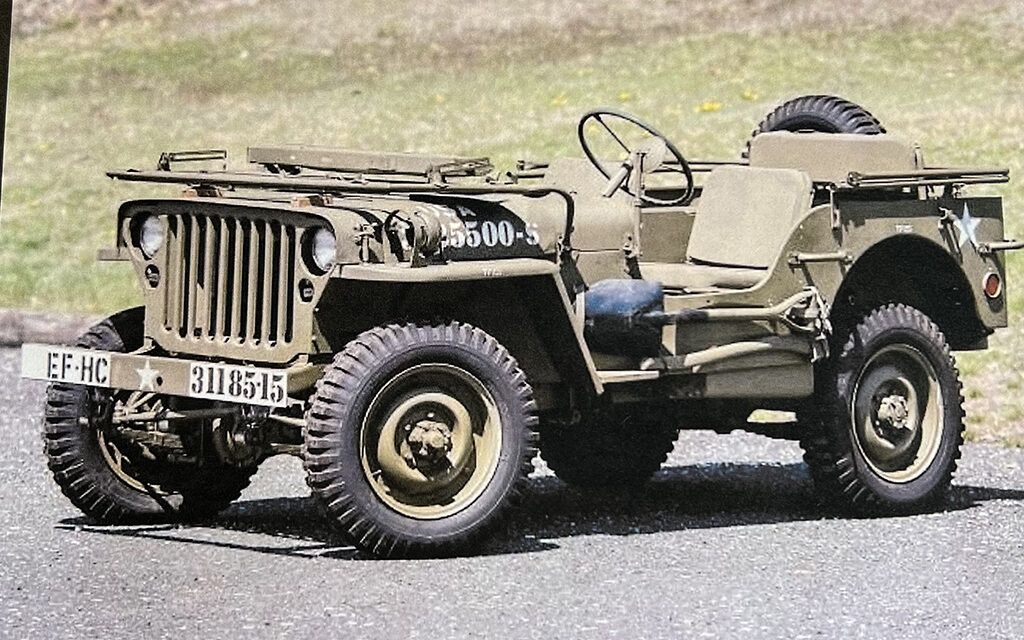by John Jefferson
While sitting in the new-to-me-SUV finishing my lunch, the sun illuminated the horn ring. Something was embossed into it that I hadn’t noticed before.
On looking at it closely, it read simply “Since 1941.”
It took a few seconds, but then I somberly realized the significance. This was a JEEP.
It wasn’t “my father’s Jeep,” though — he rode in or drove Jeeps from the time the first Willys Jeeps appeared at Army bases in Texas in 1941 and later in Africa, Sicily, and Italy before he was hospitalized in Tunisia. But it gave me a melancholy pride thinking about the Jeep heritage.
I can’t find anything on the history of the Willys-Overland Company, but it was in on the early development and production of “the Jeep.”
That was the U.S. Army’s code name for the revolutionary new all-terrain vehicle. The Army gave Walter Chrysler the duty of designing a small quarter-ton vehicle that could go just about everywhere. So, he did.
The army approved Chrysler’s design and solicited bids from 135 auto makers.
Someone at Willys-Overland company probably sensed an opportunity and went after its full bore. Only three companies submitted bids: Bantam, Willys, and Ford.
According to information on Willys’ and others’ websites, in 1940, Willys delivered what they called the “Quad” on Veterans’ Day. (Veterans’ Day this year is Saturday.) I was still playing with toy cars in 1940.
It was known as “Quad” because it had four-wheel drive. It wasn’t the first such vehicle, but it became so famous that many consider it the original. War drums were beating. A little over a year later, Pearl Harbor was bombed, drawing America into a war already raging in Europe and the Pacific.
Jeeps were said to become the soldier’s best friend — second only to his rifle. WW II combat cartoonist, Bill Maulding, embedded with the troops, showed a soldier shielding his eyes as he shoots his “dying” Jeep.
Jeeps even became movie stars — remember the scene from “Patton” where troops were mired down in mud in their “Deuce-and-a-half” trucks and General Patton slugged past them through it in a Jeep? Legend has it that he helicoptered to the end of the column and did it for encouragement. It worked.
And get this: Some of the first models, costing the government $738.74, were sent to our Allies at the time – England and RUSSIA.
After that awful war, many surplus Jeeps were sold to civilians. I rode to school in Tanner Hunt’s red lead-painted WW II Jeep. We even survived getting hit by a train, once. We don’t know what happened to the train – but we never saw it again! The few surviving WW II Jeeps bring five and six figures, nowadays.
An American company, Kaiser, began marketing new Jeeps to civilians. Although it wasn’t the first 4WD vehicle, it is said to have influenced EVERY 4×4 built since! Seeing the multiple “jeeps” of different makes and models being towed west last weekend to deer leases is indisputable evidence.
JJ





